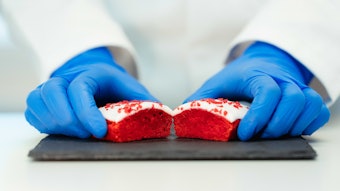Like the subject of a previous article, 3,5-dimethylcyclopentane- 1,2-dione (FEMA# 3269), 2-phenylacetic acid (FEMA# 2878; see F-1) combines two important characteristics. It has an intense honey aroma, lingering even to the extent of being slightly cloying, but it is also very important because it has a useful, subtle sweet taste. 2-Phenylacetic acid is found very widely in nature, but it is surprisingly little used in flavors, perhaps because the character is so substantive, but possibly also because it is quite easy to accidentally overdo the dose level in some flavor types.
2-Phenylacetic acid actually does not have a steep dose response curve, but the odor is unusually pure, representing a single odor character, and consequently the nose fatigues to it quite readily. Alternatives are very thin on the ground, but esters of 2-phenylacetic acid are commonly used, especially ethyl 2-phenylacetate (FEMA# 2452) and methyl 2-phenylacetate (FEMA# 2733). Both chemicals are very attractive and have a strong honey character.
Brown Flavors
Honey: The peculiar, but widespread, distaste for such a useful ingredient even extends to the most obvious use of the raw material. It is probably the most characteristic naturally occurring chemical in honey, but it is still surprisingly infrequently used in honey flavors. A good high-end dose rate in a honey flavor constructed around this raw material is 5,000 ppm.










